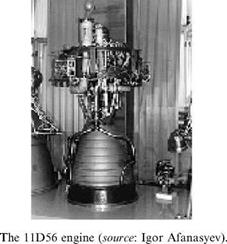MEDIA BUILD-UP TO THE FIRST FLIGHT
None of these preparatory activities were reported by the Soviet media as they happened. Although Buran was no longer a state secret, Soviet space officials adopted a carefully limited posture concerning their plans. As the new policy of openness came into effect, some space officials and cosmonauts had begun confirming the existence of a shuttle in interviews and informal conversations in the mid-1980s. The official disclosure of the Soviet shuttle was left to Glavkosmos, an organization often described in the West as a Soviet equivalent to NASA, although it was actually the international relations arm of the Ministry of General Machine Building. Speaking at a Moscow press conference on 8 April 1987, Glavkosmos official Stepan Bogodyazh finally acknowledged that the Soviet Union was developing a reusable spacecraft and would announce the launch in advance. Bogodyazh’s statement was confirmed on 13 May 1987, when the TASS news agency reported the imminent launch of the first Energiya rocket and added it would be used in the future to orbit reusable spacecraft. In January 1988 Glavkosmos chief Aleksandr Dunayev told another Moscow news conference the first Soviet shuttle would be launched soon. Two months later he said the mission was still expected shortly, although engineers were encountering problems daily. He also promised that (unlike the maiden Energiya launch) the shuttle launch would be broadcast live on Soviet television.
Despite these occasional statements, Soviet officials provided little if any technical details on their shuttle system. All this changed with the release of a government decree in early July 1988 that officially declassified the Energiya-Buran program [39]. By the end of that month the newspaper Pravda published an in-depth article on the Energiya-Buran system by chief designer Boris Gubanov, who confirmed earlier statements that Buran’s first flight would be unmanned:
“The role of manned flights on such carriers is not yet fully clear, such is the opinion of many specialists. A blind imitation of air travel is not relevant here. Space technology has gone its own way. Automatic ships were the first to enter space and humans followed only later. In the future, space will mainly be the working field of automatic spacecraft and transportation systems. The role of humans will probably be linked to research and specific maintenance and repair work… Today’s task is to accomplish the landing of an orbital ship in automatic mode without the involvement of pilots, and later that of separate units and stages. Nowadays, automatic flights from take-off to touchdown are also performed with aircraft, such as the Tu-204.’’
Almost certainly, the flight had originally been timed to upstage the return to flight of the US Space Shuttle (mission STS-26), but the ODU problems and several other issues had thwarted those plans. However, unaware of those developments, Western media speculated the Soviet shuttle might still blast off before Discovery. On 20 September the Washington Times reported US spy satellites had photographed the Soviet shuttle on the pad earlier that month and that some US officials expected a launch within a week. This clearly was a mistake, because the stack had been inside the Energiya assembly building since late August. However, the newspaper also quoted Soviet space expert Saunders Kramer as saying the odds of that happening were all but zero. Kramer correctly stated the vehicle had been wheeled out to the pad in the spring and “then inexplicably removed”, attributing the delay to problems with the computer software [40].
On 29 September 1988 all eyes were turned to Cape Canaveral in Florida, where the Space Shuttle Discovery was poised to return America to space 2.5 years after the January 1986 Challenger disaster. Lift-off occurred at 15: 37 gmt, and eight minutes later Discovery safely entered orbit. However, the Russians were intent on stealing at least some of the thunder from NASA’s success, taking advantage of the occasion to finally unveil their counterpart of the Space Shuttle to the world. Television viewers around the Soviet Union were surprised when the evening news program Vremya opened by showing a shot of the Energiya-Buran stack on the launch pad (taken during the May-June pad tests). The name Buran, painted on the side of the vehicle, had been carefully retouched so as not to be visible to the television audience, although it had leaked to the West several years earlier. The picture was accompanied by a terse TASS statement saying preparations for the launch were underway and that the mission would be unmanned. The Buran lead story was followed by footage of a conversation between the orbiting Mir crew and East German leader Erich Honecker. Vremya completely downplayed the news from Cape Canaveral by showing a brief clip of the Discovery launch just before going off the air. Interestingly, the following day some Soviet newspapers published exactly the same photograph with the name Buran erased altogether.
The next comment on launch preparations came from LII lead test pilot Igor Volk. Speaking at a meeting of the Association of Space Explorers in Bulgaria in early October, he revealed that 23 October was the target date for the launch when he left the Soviet Union. The Soviet shuttle moved into the background again until 23 October, when the TASS news agency once again repeated that final launch preparations were underway and revealed that the orbiter was called Buran. That same day Vremya showed the first ever footage of Energiya-Buran, including spectacular shots inside the MZK, during the roll-out and on the launch pad.











